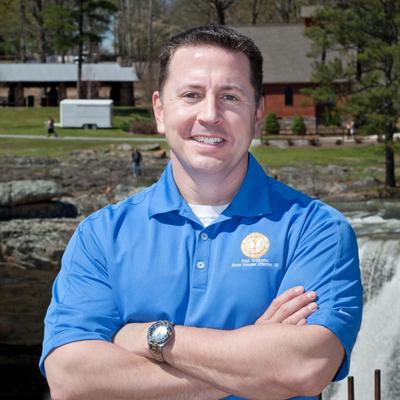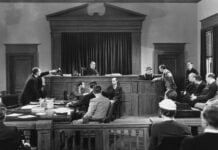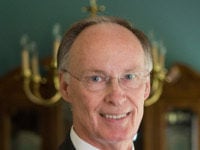FLASHPOINTS TO WAR OR PEACE
Four years ago, on August 26th, 2021, a suicide bomber entered the crowd of thronging, panicking Afghans massed outside the Abbey Gate at the airport in Kabul, Afghanistan. Thousands were gathered in the tight confines of a desperate moment. The Biden administration had suddenly announced the abandonment of US citizens, military equipment, allies and friends. Twenty years of blood and treasure were sacrificed on the altar of feckless foreign policy. The coup de grace was the detonation of a madman that killed thirteen US servicemembers and 168 civilians.
The world watched in horror.
Vladimir Putin watched in fascination.
It was the flashpoint that ended US presence in Afghanistan. It was also the flashpoint that launched the war in Ukraine.
Historians will look back on Russia’s incursion into Ukraine and examine all of the reasons why. All of the geopolitical premises, the cultural and historical tensions, the demographics and economies of Russia and Ukraine. But those were not the straw that broke the proverbial camel’s back.
Every war has a flashpoint. A moment in time that creates the make-or-break moment. The war in Ukraine is no different and the flashpoint occurred exactly four years ago this week. A flashpoint that sent shockwaves around the world. Putin found his immoral clarity to cross the line from peace to war because of the Biden administrations debacle pullout from Afghanistan.
The moment Biden’s team sacrificed thirteen of its own was shocking, it was awful, it was a sign that the US was (at that point) not a nation operating in strength, and without care for the fate of others. Putin knew that the US under Joe Biden would falter if he chose to attack.
Just prior to the Afghanistan pullout Russia had actually pulled troops away from the Ukrainian border. Within weeks of the Abbey Gate bombing Russian and Belarussian troops massed for joint exercises near the Ukrainian border. Nearly six months to the day after Abbey Gate was bombed Russia invaded. Afghanistan was the flashpoint that launched the war in Ukraine.
Flashpoints happen. How they are handled makes all the difference. Throughout history there have been numerous such singular acts or moments in time that have drawn the US into conflict. But there have also been flashpoints that were stared down effectively. The difference is a question of leadership.
The kickoff to WWI was the assassination of Austrian Archduke Ferdinand. The entrance of the US to WWI was the prompted sinking of the Lusitania that killed 128 Americans. The flashpoint for the Spanish-American War in Cuba was the sinking of the USS Maine in Havana Harbor. The attack on Pearl Harbor instigated WWII. The flashpoint for the Global War on Terror was 9/11.
But are there times when a flashpoint is mitigated without it escalating fully? Yes. If leaders actually lead.
In October, 1962 the world stood on the brink of the cold war going very hot as the Soviet Union attempted to put nuclear missiles a stone’s throw off of our southern waters in Cuba. President John F. Kennedy stared down that situation with resolve. Had Kennedy blinked, equivocated, or tried to appease the Soviets for even one second enough nuclear weaponry would have been permanently stationed off US shores with the capability to wipe half of America off the map within minutes of launch. The Cuban Missile Crisis. A flashpoint in time. Leadership made the difference. War was avoided.
One of history’s forgotten flashpoints also has an anniversary this month. A flashpoint that nearly ignited a second war on the Korean peninsula. The demilitarized zone (DMZ) between South Korea and North Korea is a buffer between two countries who hate each other. South Korean and US troops have guarded the DMZ since the ceasefire that ended fighting in the Korean War. But tensions remain high. The Joint Security Area (JSA) where both US/South Korean and North Korean troops all have a presence is the only site for interaction between the two hostile sides.
On August 18th, 1976, Captain Arthur Bonifas, was leading a group of US and South Korean soldiers for the simple purpose of trimming a tree that blocked American observation posts in the DMZ. North Korean troops confronted the US led group claiming that the tree was “personally planted and nourished by Kim Il Sung.” The Americans were not deterred and resumed their work. What happened next shocked people around the world.
The larger group of North Korean soldiers attacked the American and South Korean soldiers near the tree and literally hacked and bludgeoned Captain Bonifas and one of his Lieutenants to death. The North Korean the Americans “attacked our guards en masse… wielding murderous weapons.” The level of tension was palpable. The world was staring at a conflict that could well draw in China and the Soviet Union. President Gerald Ford was faced with a flashpoint. Equivocation or indecisiveness would mean North Korea was emboldened. War was imminent.
President Ford knew that America was jaded from having just left Vietnam. But he also knew that flashpoints happen and doing nothing could be worse. So he faced it head on.
Three days later, on August 21, “Operation Paul Bunyan”, a plan that was promoted and authorized by President Ford was launched. A large contingent of armed US and South Korean troops entered the JSA with US Army Cobra attack helicopters on the horizon. B-52 bombers and F-4 Phantoms flew overhead, and the USS Midway task force steamed offshore. 200 North Korean soldiers rushed into the area and began setting up machine gun positions. The Americans cut down the tree and left a ten foot stump as a reminder for the North Koreans. Throughout it all the North Koreans watched the tree cutting in silence and never fired a shot. Kim Il Sung had backed down. Several hours later the North Korean leadership issued a formal regret, which is like an almost apology.
Flashpoints happen. The world is a crazy place filled with things that most of us never even know about. At any given time a madman, an assassin, a crisis, a pandemic, can arise and set everything on edge. Sometimes those moments are the flashpoint in a geographical area, or in the middle of a competing interest, or a historical grievance.
What matters in determing whether a flashpoint leads peace or war is leadership. Real leadership. Leadership that has been tested and proven worthy for such a time as that.
JFK stared down the Soviets. Ford stared down the North Koreans. Biden caused the war in Ukraine.
Flashpoints happen. Leadership matters.

















